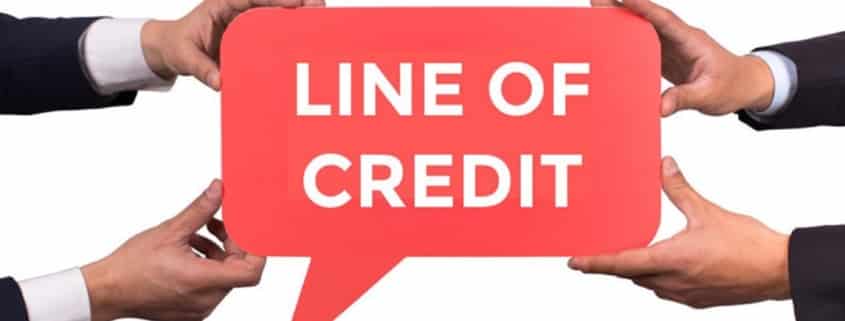KEY TAKEAWAYS
- Short-term financing options like short-term loans and merchant cash advances can offer small business owners fast remedies for addressing cash flow challenges, all while providing flexible repayment terms.
- Accounts receivable financing and business lines of credit offer access to capital based on invoices or credit limits, allowing businesses to manage working capital effectively.
- Trade credit, inventory financing, business credit cards, and peer-to-peer financing can be good alternative sources of short-term finance that cater to specific needs, from delaying supplier payments to securing inventory and accessing peer-based loans.
Every small business owner deals with capital and cash flow management, which can include capital shortages. Whatever the reason for a shortage may be, it’s the owner’s job to find ways to infuse additional capital into their business when one occurs. Short-term financing can be a viable solution in such instances.
The good news is, there are many forms of short-term funding available for consideration. In this article, we’ll highlight some of the best sources of short term financing available to help you grow your business. So, if you need short-term business financing to improve cash flow or for another reason, consider these options.
Short-Term Loans
As its name suggests, this type of business loan matures after a short term, usually within a few months. While these loans typically come with fixed interest rates, there are some lenders that offer variable interest as well.
Short term loans are best used to address immediate cash flow needs, and they can be very beneficial for different businesses under the right circumstance. For example, you lack the cash to pay your employees’ salaries because your business is dealing with the tail-end of your slow season. These short term business loans can fill the gap until business picks back up.
Because of their short maturity periods, a short term loan is typically granted with lower borrowing caps than you would see with financing that has a longer maturity period. Still, the overall cost of financing is often lower than a long term loan.
Merchant Cash Advance
If your business has not built a credit history yet, you may still qualify for a merchant cash advance, Unlike traditional loans, merchant cash advances offer a flexible financing solution based on your sales, not fixed rates. Instead, a financing company purchases a business’ future sales as a discounted rate. Payback occurs as you make sales or your accounts receivables are paid during your normal course of business, with a percentage of that incoming revenue.
There are a number of perks to taking out a merchant cash advance. One is the fact that you, the borrower, can negotiate the rates. You also don’t typically need collateral to secure the loan, but personal guarantees are required, and approval times are generally faster than a traditional term loan.
On the flip side, merchant cash advances subject borrowers to higher interest rates than traditional loans due to the uncertainty involved with sales.
Accounts Receivable Financing
Accounts receivable financing, also known as invoice factoring, allows borrowers to leverage their outstanding invoices for immediate capital. Unlock immediate capital with accounts receivable financing by leveraging the value of your outstanding invoices. Lenders can give you up to 90% of the total invoice value upfront, and you’ll receive the rest (minus a factor fee) once your customers pay their dues. You can receive the money within a matter of days, and stellar credit isn’t required On your end. Instead, terms are based on your customer’s creditworthiness. As such, invoice Factoring is an ideal financial product if your business has several outstanding invoices with well-established businesses.
Accounts receivable loans can be repaid in two ways. The first is structured where you pay back the amount borrowed after you’ve collected payment for your invoices, plus the interest you and the lender agreed upon when you were approved for the loan.
The second option is to sell your invoices to the lender at a pre-determined rate. Instead of repaying the loan, you’re actually shifting the burden of collecting and settling the amounts due from your customers to the loan company.
Be sure that you understand the terms of your agreement and consider the factor fees and other rates. This way, you know how much this short-term funding will cost your business in the long run.
Business Line of Credit
A business credit line grants you access to a set amount of credit that you can borrow from as needed. Instead of providing you with a lump-sum loan, a business credit line allows you to select however much cash you need, within your limit, at any given time. The rest of your credit remains available, for the term of your agreement, for you to borrow when the need arises again.
This alternative to traditional business loans is advantageous because you’re not limited by preset loan amounts. For example, if you only need $5,000 and have a credit line worth $10,000, you can borrow what you need and still have $5,000 to draw from when cash flow requires it again. The only downside is that lines of credit generally run-on variable rates. Therefore, interest on the loan can fluctuate. However, a credit line gives you the flexibility to take money as needed; it also gives you more freedom in using that money vs. a business credit card which limits your.
Trade Credit
Trade credit is essentially a “buy now, pay later” agreement between a vendor and their supplier. Through this type of short-term financing, you can buy much-needed inventory from your supplier that you can pay for at a later date. This eliminates the need to have cash on hand to pay the supplier upon delivery.
While it does not provide you with cash, the trade credit arrangement still helps to improve cash flow by providing you with inventory that you can sell off and earn revenues from. If you have a good working relationship with your vendors, you can expect very low or even no interest at all!
Trade credits are beneficial if you’re expecting huge sales of a specific product or product line. For example, if you need inventory for a Black Friday sale and don’t have the cash, you can arrange for credits with your suppliers instead.
Another perk to using trade credit for short-term financing is that these transactions can improve your business credit.
Inventory Financing
Inventory financing is another ideal short-term financing avenue that product-based small businesses might consider. This type of financing offers working capital to purchase inventory. The inventory serves as collateral for the loan. It is a secured loan, but you don’t need to pledge any business assets to the lender. Instead, the inventory that you’ll be purchasing serves as collateral.
Just like trade credits, inventory financing is a great option when you’re expecting a huge inventory movement like seasonal sales, but your supplies have already run low and you have no capital available. Just make sure you pay off the loan once you’ve sold off the inventory you pledged for it, or else the lender will seize your supplies upon default.
Business Credit Cards
Like their consumer counterparts, business credit cards can provide purchasing power even when your cash flow is tied up. You use credits assigned to your card to make purchases and then pay them off when the due date arrives. Paying off the credits makes them available once again for use.
Business credit cards are generally more advantageous because they provide you with flexibility in repaying the credit. Depending on the type of card you apply for, you can also earn various rewards that can be put towards your business needs. Plus, it’s easier to apply for a business credit card than for a business loan.
Peer to Peer Financing
Peer-to-peer financing generally involves individual investors that act as lenders. Instead of a financial institution, these people are found on P2P platforms where they offer businesses or individuals the opportunity to apply for loans from them.
Just like traditional loans, the borrower and the lenders agree to a loan with fixed interest rates. The transaction is made between the two parties directly. The only “middleman” involved is the platform.
The more personal nature of the negotiations also improves the borrower’s chances of being approved instead of trying to borrow from a financial institution. The interest rates may also be more favorable.
While it gives borrowers direct access to funds, peer-to-peer financing also complicates the process. This is because not all lenders will want to finance the amount needed. For example, if you’re seeking a loan of $20,000, one lender may agree to let you borrow $1,000, another will extend you $5,000, and so on and so forth. This means multiple negotiations and, as a result, multiple loan agreements with varying dates and interest rates.
It’s good to know what options for short-term financing are available for your business when you’re in a pinch. This knowledge saves you from a lot of stress and headaches from wondering where you can get quick financial aid.




